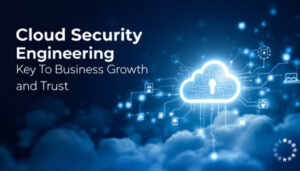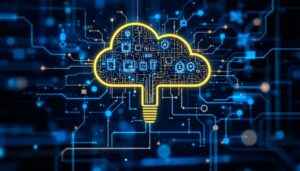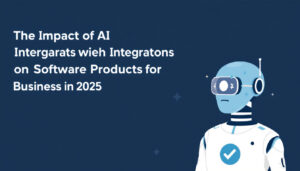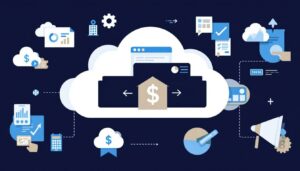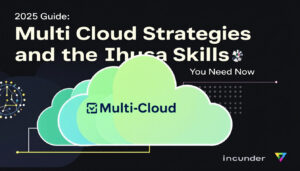Cloud-based digital products serve as the backbone of business operations, software development, electronics, and IT systems in 2025. Rapid adoption brings increased agility and efficiency, but it also raises persistent concerns around data protection, access control, and compliance. As organizations continue to expand their use of these platforms, security must remain a core focus.
Protecting sensitive data and intellectual property has become non-negotiable for any enterprise managing digital assets in the cloud. Neglecting these safeguards can expose teams to regulatory, financial, and reputational risks. For context on the broader advantages and challenges, review key insights in Digital Product Types Explained.
This article outlines the essential security considerations for cloud-based digital products, equipping IT, developer, electronic, and business professionals with the knowledge needed to minimize threats and build trust in 2025.
Evolving Landscape of Cloud-Based Digital Products in 2025
 Photo by SpaceX
Photo by SpaceX
Cloud-based digital products now drive digital transformation across all sectors, bringing both new opportunities and risks. In 2025, technology decision-makers and engineering teams face new challenges as they select and secure their cloud environments. The rise of flexible platforms, shifts in how teams manage infrastructure, and ambitious innovation targets all fuel this shift.
To make sense of change in this space, let’s assess current trends, adoption patterns, and novel threats you must prepare for.
Key Cloud Trends Shaping Product Strategy
Cloud innovations define strategic choices for IT and business leaders. Several leading trends include:
- Artificial intelligence embedded in cloud services: Cloud providers now build AI tools directly into platform offerings for analytics, security, and automation.
- Edge computing integration: Many organizations process sensitive data closer to physical endpoints, promoting privacy and speed, but complicating oversight.
- Quantum computing access via cloud: Early-stage quantum resources are available on mainstream platforms, presenting fresh performance advantages and unique risk vectors.
- Hybrid and multi-cloud strategies: Enterprises spread digital products across multiple providers, which adds agility but increases complexity in monitoring and securing assets.
For a deeper industry perspective on these cloud computing shifts and practical technology applications, see The 7 Revolutionary Cloud Computing Trends That Will Define Business Success in 2025 on Forbes.
Cloud Adoption Rates and Digital Transformation Drivers
The scale of adoption in 2025 is unprecedented. Enterprise usage of both public and private clouds continues expanding at a strong pace.
- Widespread public cloud use: Approximately 96% of businesses use public cloud providers.
- Growth in private and hybrid setups: Close to 84% also deploy some form of private or hybrid cloud, aiming for data sovereignty and specialized compliance.
- Data volumes skyrocketing: Global cloud storage is projected to hit 200 zettabytes by year-end, putting new pressure on security teams.
These metrics signal just how central cloud environments have become. Leaders are motivated by improved cost control, scalability, and the agility to launch advanced digital products faster than ever before. More adoption, however, means more attack surface and more data at risk. For a data-driven overview, visit 55 Cloud Computing Statistics for 2025 from Spacelift.
Innovation Introducing New Security Challenges
While cloud platforms accelerate development and collaboration, their advanced capabilities also create distinct gaps. Custom workflows and the integration of AI, edge, and quantum computing multiply potential vulnerabilities that bad actors may seek to exploit. Security planning now covers:
- Third-party API exposures: More partners and integrations lead to more potential weak points.
- Dynamic access management: Staff now split time across many environments, making traditional perimeter security models outdated.
- Real-time threat response: Automated attacks adapt swiftly. Teams must pair automation with continuous oversight.
Cloud choice itself impacts risk profile. To see how leading services align in features and protections, explore the detailed Cloud Storage Comparison 2025, which breaks down options for data safety, compliance, and technical fit.
Security professionals and business leaders must work together as product strategies evolve, adapting controls to match the pace of cloud adoption and the sophistication of new tools.
Key Security Threats to Cloud Solutions in 2025
Cloud-based digital products hold more business value and sensitive information than ever. New threats are targeting these assets in increasingly creative ways as we approach 2025. IT professionals, engineers, and business leaders must understand where risks are rising. Below are the most pressing dangers shaping security strategies in the cloud this year.
 Photo by panumas nikhomkhai
Photo by panumas nikhomkhai
AI-Driven Cyber Attacks
Artificial intelligence is rapidly advancing the tools used by attackers. Machine learning automates phishing, password cracking, and vulnerability discovery. AI-augmented malware adapts its behavior on the fly and avoids detection until damage is done. In 2025, security teams face a growing number of AI-supported breaches in the cloud, with credential theft and advanced social engineering leading the charge. According to a recent Darktrace report, 78% of organizations experienced attempted AI-fueled attacks, many targeting SaaS and cloud storage.
Real example: A global logistics firm suffered a breach when AI-generated phishing emails successfully bypassed cloud-based filtering and compromised administrator accounts.
Ransomware Targeting SaaS and Cloud Storage
Ransomware has evolved beyond on-premise systems. In 2025, extortion groups are shifting focus to SaaS apps, collaboration tools, and cloud backups—often disabling access to business-critical data. These attacks use double extortion, threatening to leak company or client information unless paid. The growing threat of ransomware in cloud environments puts all digital assets at risk, especially where versioning or backup configurations are weak. Business interruptions and regulatory fines can result if recovery plans are untested.
Consider this: In early 2025, a major SaaS provider faced global outages after coordinated ransomware attacks encrypted both customer data and backup repositories.
Misconfigured APIs
Cloud-based products depend on APIs for integration and automation. However, a single misconfiguration can expose data, escalate privileges, or break security controls. Frequent deployment cycles increase the risk of oversights, making automated scanning and review essential. Unprotected endpoints are a common entry point for attackers searching for cloud weaknesses. Without strong authentication, encryption, and monitoring, sensitive records can be exposed to anyone with the right URL.
Security organizations now urge teams to treat API configuration as a critical part of overall cloud security hygiene.
Supply Chain Vulnerabilities
Dependence on third-party software and cloud-hosted tools continues to grow. In 2025, attackers increasingly compromise upstream providers to gain broader access. Supply chain incidents can compromise thousands of organizations through a single point of entry. The Oracle Cloud breach earlier this year exposed 6 million records due to a hidden cloud vulnerability, affecting over 140,000 tenants. Aftereffects include costly data notification requirements and reputational harm.
To minimize these risks, businesses are adopting tighter third-party risk management and routinely testing the cloud components their solutions rely on. Insights on vendor assessment are covered in the guide to digital product sourcing security.
Insider Threats
Employees and contractors—whether by error or with intent—remain a significant source of risk. With remote teams and cross-provider environments, privilege management and monitoring inside the cloud are more difficult. Insider threats can involve data theft, accidental deletion, or misuse of business secrets. According to the Cloud Security Alliance, organizations saw a marked increase in insider incidents, often undetected for weeks.
Data access policies, always-on auditing, and regular least-privilege reviews are becoming mandatory components of the modern cloud security stack. Teams should also focus on data compliance considerations as regulatory penalties rise for improper insider controls.
Ignoring emerging security risks is not an option for teams operating in the cloud. Staying ahead means understanding how threats like AI-driven attacks, ransomware, API weaknesses, supply chain flaws, and insider risks are shifting. Organizations prepared to adapt their security measures will build safer, more trustworthy cloud-based products in 2025.
Best Practices for Securing Cloud-Based Digital Products
Securing cloud-based digital products requires precise strategies and continuous refinement. As threats grow more sophisticated in 2025, organizations need to move beyond basic security steps and employ robust, multi-layered defenses. Focusing on advanced encryption, strong identity and access management, and automated security controls will cut the risk of breaches and data loss.
Data Encryption and Privacy Protocols
 Photo by panumas nikhomkhai
Photo by panumas nikhomkhai
Encryption stands as the first shield protecting sensitive data across cloud environments. Recent advancements extend protection beyond storage, ensuring confidentiality even during data transit and processing.
- End-to-end encryption secures data from origin to destination, blocking access even if cloud providers are compromised.
- Zero-knowledge encryption ensures service providers cannot see or access any user data, meeting strict privacy demands for regulated sectors.
- Privacy-by-design incorporates encryption and user consent into the product lifecycle, aligning with global compliance needs from the start.
Quantum-resistant algorithms, poised to counter future cryptographic threats, are gaining traction. These emerging standards strengthen protection against quantum computing risks discussed in the Top 5 Cloud Security Trends of 2025.
Encryption is not only mandatory for business and enterprise data. It now extends to everyday endpoints such as smartphones and connected devices. For example, implementing encryption in mobile and app security is a necessity, not an option. Users should consider solutions like those found in Free Antivirus for iPhone 2025 to reinforce data security beyond the cloud application layer.
Leading protocols—such as TLS 1.3 for network traffic and established AES standards for stored information—remain standards. Organizations should:
- Apply encryption automatically to all data, both in transit and at rest.
- Regularly review encryption key management processes.
- Audit encryption for gaps, especially when integrating third-party platforms.
Automated security controls can streamline these checks. For practical implementation of these controls and further efficiency, see Cloud Automation Strategies to Boost Productivity in 2025.
Identity and Access Management Strategies
Identity and access management (IAM) governs who can access resources and what they can do. Poorly configured IAM creates avenues for unauthorized access, insider attacks, and privilege abuse, especially with large or dynamic user bases that span multiple digital products.
Effective IAM in 2025 is based on several clear principles:
- Granular access controls assign the lowest required permissions to each user or system. This curtails risk if credentials are compromised.
- Least-privilege policies ensure no individual or application has more rights than necessary, helping to prevent lateral movement across cloud assets.
- Adaptive authentication—including multi-factor authentication (MFA) and risk-based analysis—adjusts security demands depending on the user’s context, location, or device.
Many organizations now need to manage access across hybrid, multi-cloud, and SaaS ecosystems. The expanded complexity introduces new integration points where attackers may gain a foothold. Trusted central IAM platforms help reduce management errors, but success still depends on regular audits and realistic access reviews.
Key actions for improving IAM include:
- Enforce multi-factor authentication for all access to administrative and sensitive resources.
- Apply network segmentation and separation of duties to prevent escalation from compromised accounts.
- Monitor and review all account activities using continuous auditing tools.
- Revoke and update permissions promptly as staff or partners change roles.
Automated IAM tools can simplify routine tasks and help sustain compliance. For a broader understanding of best practices, consult insights from Identity and Access Management Best Practices and Identity and Access Management for Enhanced Security.
Staying current with cloud security trends—including zero trust frameworks and machine learning-driven monitoring—offers additional assurance against evolving threats. For more on these trends, see the summary on 2025’s top cloud security trends.
Making security central to cloud product development is now a norm—full adoption of encryption, regular access audits, and continuous monitoring are industry expectations. For related details on digital product risk, refer to the dedicated guide on digital product sourcing, risk, and compliance.
Compliance and Governance for Cloud Products
Cloud adoption comes with strict regulatory demands and heightened scrutiny from audit and oversight bodies. In 2025, the compliance environment is more complex, shaped by global privacy laws, sector guidelines, and new expectations from customers and partners. Cloud products must adhere to multiple standards across jurisdictions, making continuous governance central to secure and lawful operations.
Effective compliance is about more than just meeting baseline requirements. It is a framework that protects business interests, maintains customer trust, and supports sustainable growth. Below are key components of compliance and governance for cloud-based digital products.
 Photo by MESSALA CIULLA
Photo by MESSALA CIULLA
Evolving Cloud Compliance Standards
Countries and regions enforce data privacy and security laws that set strict obligations for organizations hosting customer or employee information in the cloud. In 2025, these are the primary frameworks impacting global operations:
- GDPR (General Data Protection Regulation) in the European Union continues to influence international policy with its requirements around data minimization, breach notification, and subject rights.
- CCPA (California Consumer Privacy Act) and similar U.S. state laws reinforce consumer privacy, giving individuals control over data collection and sharing.
- Industry-specific benchmarks, such as HIPAA for healthcare, PCI DSS for payment data, and FedRAMP for government, raise the bar for sector participants.
Emerging regulations in Asia-Pacific and South America are expanding the compliance map, requiring localized cloud data handling and clear consent frameworks. Organizations must keep pace by mapping all regulatory touchpoints and updating controls as the environment shifts. Broad coverage of privacy-by-design methods and encryption is now seen as standard practice.
Key Governance Practices and Continuous Auditing
Governance refers to how organizations set policy, assign responsibility, and monitor compliance for their digital products. Strong governance protects sensitive information, clarifies accountability, and helps avoid regulatory penalties.
Modern governance programs typically include these components:
- Documented security and data handling policies aligned with business needs and regulatory obligations.
- Clear roles and responsibilities for data protection and incident response.
- Scheduled internal audits that review access controls, encryption status, and third-party service compliance.
Automated compliance tools now support continuous monitoring, quickly flagging deviations from policy and mapping controls to specific frameworks. Workflow automation reduces manual audit workload, ensuring policy enforcement remains consistent even as teams and data flows grow.
For enterprises seeking extra support or operational resources, experienced IT consultants can streamline compliance tasks and systems integration. Guidance is available through specialized IT Services and Solutions that help businesses adapt their processes without disruption.
Shared Responsibility and Policy Automation
Responsibilities for compliance in the cloud are split between the provider and the customer. Cloud providers offer infrastructure and security controls, but businesses must configure these controls, manage user access, and set appropriate data protection rules. This shared responsibility model often leads to confusion about who manages which risks.
Key responsibilities for organizations include:
- Securely configuring cloud resources and enabling advanced security features.
- Managing identity and access, including multi-factor authentication and monitoring.
- Conducting regular review of third-party vendors and dependencies.
Automation tools, such as policy-as-code or compliance-as-code, are gaining momentum. They enable consistent enforcement across hybrid and multi-cloud setups, reducing the risk of configuration drift or human error. These tools also support easier scaling of compliance activities, meeting the needs of growing organizations and dynamic cloud workloads.
For greater depth in selecting cloud providers and managing integrations securely, refer to the guide on choosing cloud sales platforms.
Impact on Organizational Roles and Internal Communication
Compliance is no longer confined to the IT or legal teams. As risks spread across business units and external partners, a culture of compliance must be fostered company-wide. Training departments, DevOps teams, and even sales roles need a baseline understanding of policy and cloud security obligations.
Creating open channels for outlining procedures, sharing audit results, and reporting incidents helps ensure everyone meets current standards. Security and compliance are now built into product development cycles, not added as a final review step. This improves transparency, response speed, and alignment with shifting legal requirements.
Consistent investment in governance strengthens operational resilience and secures long-term customer relationships. By adopting current standards, automation, and shared responsibility models, organizations keep pace with global regulatory expectations and position themselves for growth.
Future-Proofing Cloud Security: Recommendations for IT and Developers
Cloud security must keep pace with changing threats and technology. Both IT specialists and developers have a responsibility to safeguard cloud-based digital products as they plan for 2025 and beyond. The following recommendations support building defenses that adapt to a shifting environment, reduce risks, and uphold organizational trust.
 Photo by Henry & Co.
Photo by Henry & Co.
Continuous Security Training and Awareness
Cyber threats and security tools change at a rapid pace. Regular training ensures staff do not fall behind or rely on outdated habits. Offer continuous professional development in cloud security for both IT and development roles.
- Update training programs each quarter.
- Prioritize topics like identity management, secure code review, new threat vectors, and incident response.
- Include simulations based on recent breaches to reinforce scenario-based learning.
Encouraging a security-first mindset cultivates vigilance and reduces common oversights. For additional guidance on staff preparedness, organizations may reference IT Solutions and Services for wider technology resources.
AI-Driven Defensive Measures
The use of artificial intelligence in cyberattacks requires an equal focus on AI-based defenses. Integrating machine learning into security tools helps identify attacks, flag unusual behavior, and reduce the window for response.
- Deploy AI-powered monitoring to detect both known and emerging threats.
- Use automated anomaly detection to spot abnormal access patterns or privilege escalations.
- Combine rule-based alerts with adaptive, self-learning systems to minimize false positives.
Understanding both the advantages and risks of AI in the cloud is important. For an in-depth perspective, refer to Types and Risks of AI Agents to expand risk-mitigation strategies.
Secure Development Practices (DevSecOps)
Embedding security into product life cycles is essential. DevSecOps approaches treat security as a core element of design, not an afterthought.
- Automate code reviews and security testing in the build pipeline.
- Conduct routine audits of third-party code and libraries.
- Adopt least privilege models for developer and deployment tools.
Security policies must sit alongside functional requirements in project plans. This approach reduces the risk of introducing vulnerabilities as new features launch or platforms scale.
Routine Third-Party Audits
Cloud systems operate with a wide range of vendors and external components. External audits provide an unbiased review of system security, closing gaps missed during daily operations.
- Schedule independent penetration testing at least twice per year.
- Evaluate compliance with both internal policies and industry benchmarks.
- Review audit results in leadership meetings, prioritizing corrective actions.
Audits are essential for verifying cloud provider practices and internal procedures. Their findings help maintain regulatory compliance and support business continuity plans.
Scalable Incident Response Frameworks
A clear, scalable incident response plan ensures quick action when breaches occur. Plans should adapt to both minor incidents and major attacks, regardless of scale or complexity.
- Map out notification procedures and response steps for various attack types.
- Assign roles for response, escalation, and communication.
- Run regular incident response drills to identify bottlenecks or unclear instructions.
Incident frameworks must keep pace with growth, covering additional regions, compliance needs, or third-party links. Documentation and periodic reviews further sharpen organizational readiness.
Adapting Security to Technology and Regulation
Cloud environments are dynamic, with new features, services, and compliance requirements launching each year. Security strategies should not remain static.
- Monitor regulatory developments in operational regions.
- Test and deploy new defense mechanisms as new attack surfaces appear.
- Use feedback loops—gather incident data, audit findings, and team suggestions—to refine controls and procedures on an ongoing basis.
Adapting to change means taking a forward-looking view, assessing not only today’s threats but also those likely to appear as technology advances and regulations shift.
Staying ahead in cloud security calls for ongoing education, adaptive frameworks, and a willingness to refine strategies. By emphasizing these forward-looking priorities, organizations are better equipped to protect digital products and sensitive data across a fast-changing technology environment.
Conclusion
Securing cloud-based digital products in 2025 calls for a deliberate, organization-wide effort. Adoption rates and threat sophistication have made strong defenses and regular review a standard, not an option. Teams that prioritize robust encryption, strict access management, and clear compliance controls lay the groundwork for trust and operational integrity.
Security awareness and up-to-date training help limit risk from both emerging external threats and internal missteps. Regular reviews of configurations, vendors, and automated controls keep security aligned with technology changes and compliance demands. Maintaining these standards supports not only regulatory obligations but also long-term product reliability.
Thank you for reading. Continue refining your approach and stay informed about best practices—these steps help protect your reputation and your users. For additional context on managing compliance or digital risk, consider exploring resources such as the role of data compliance in digital product management.


